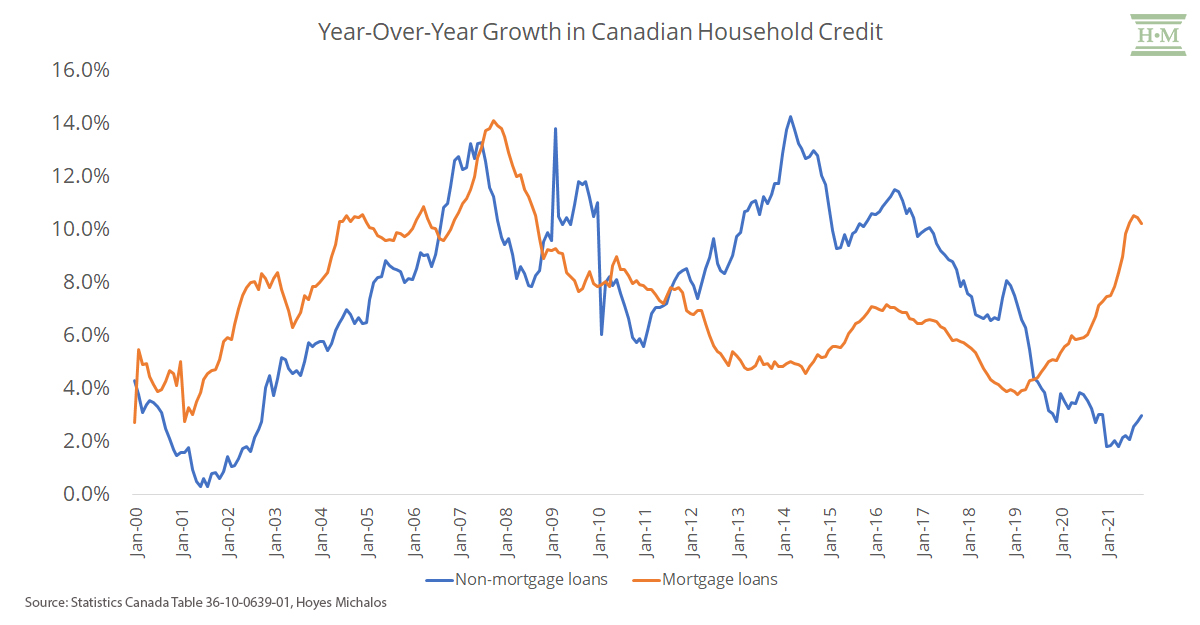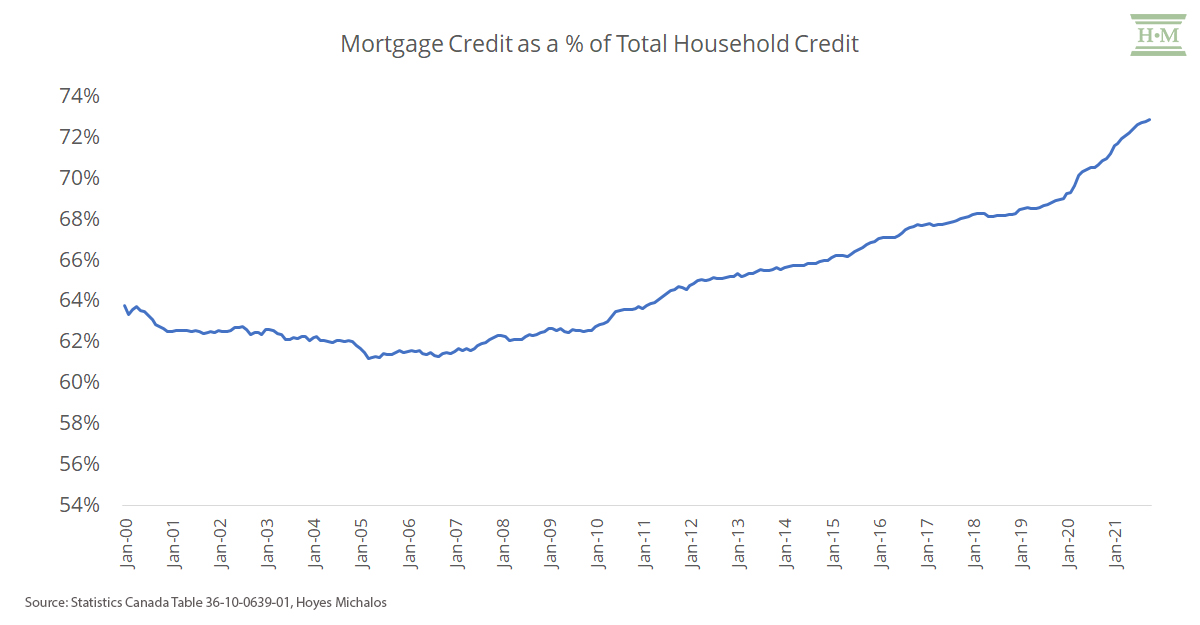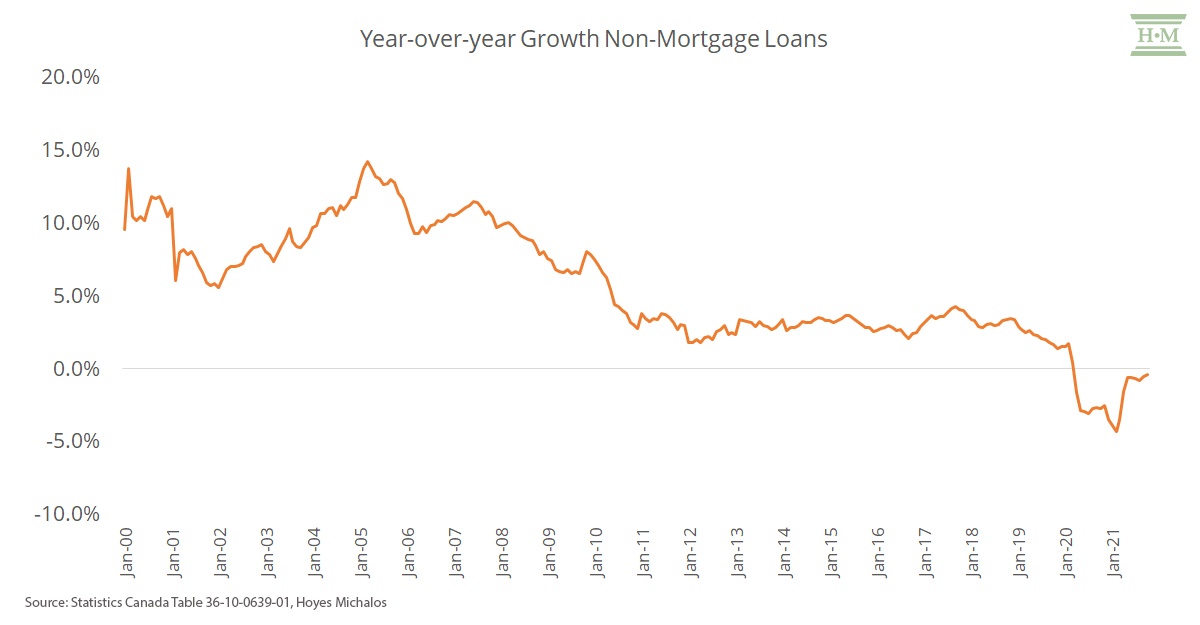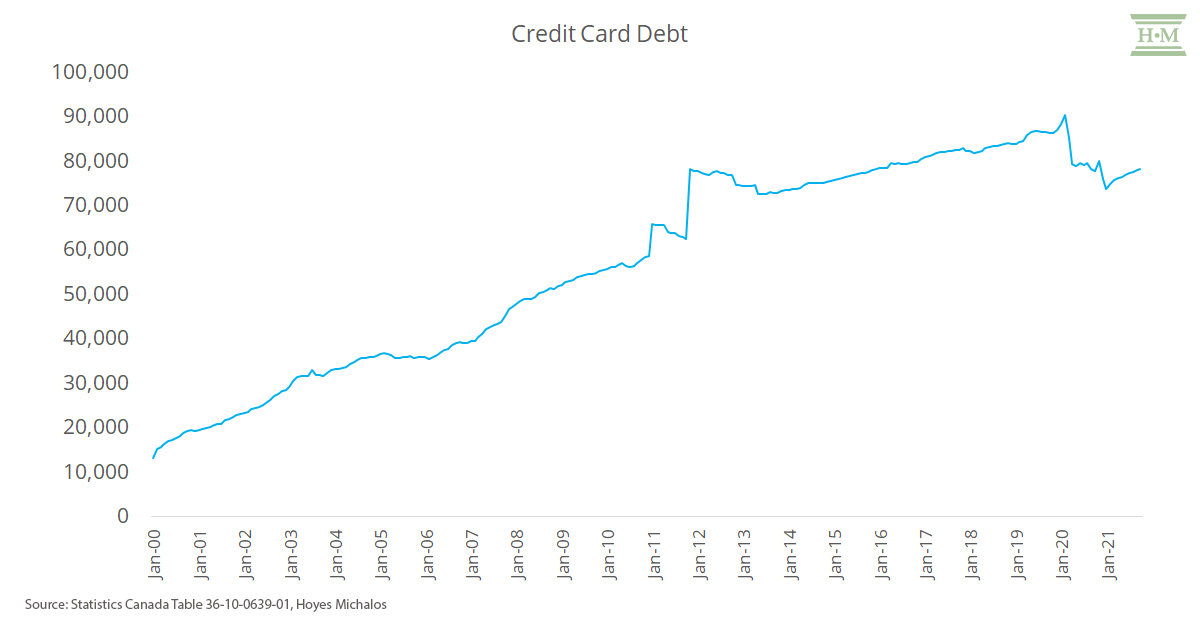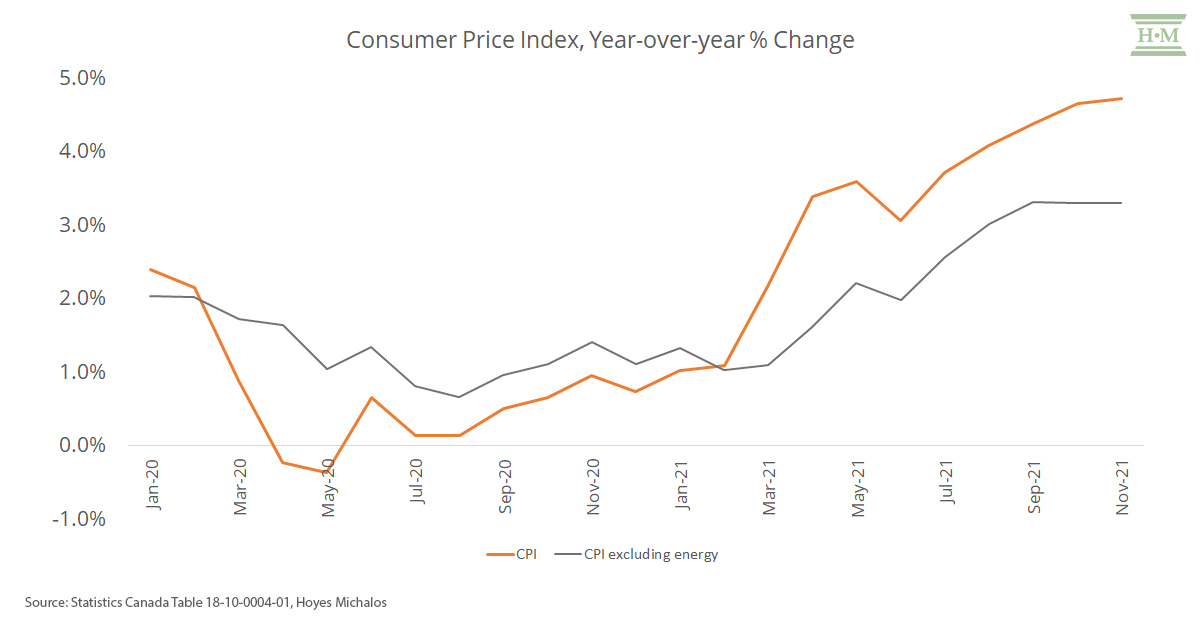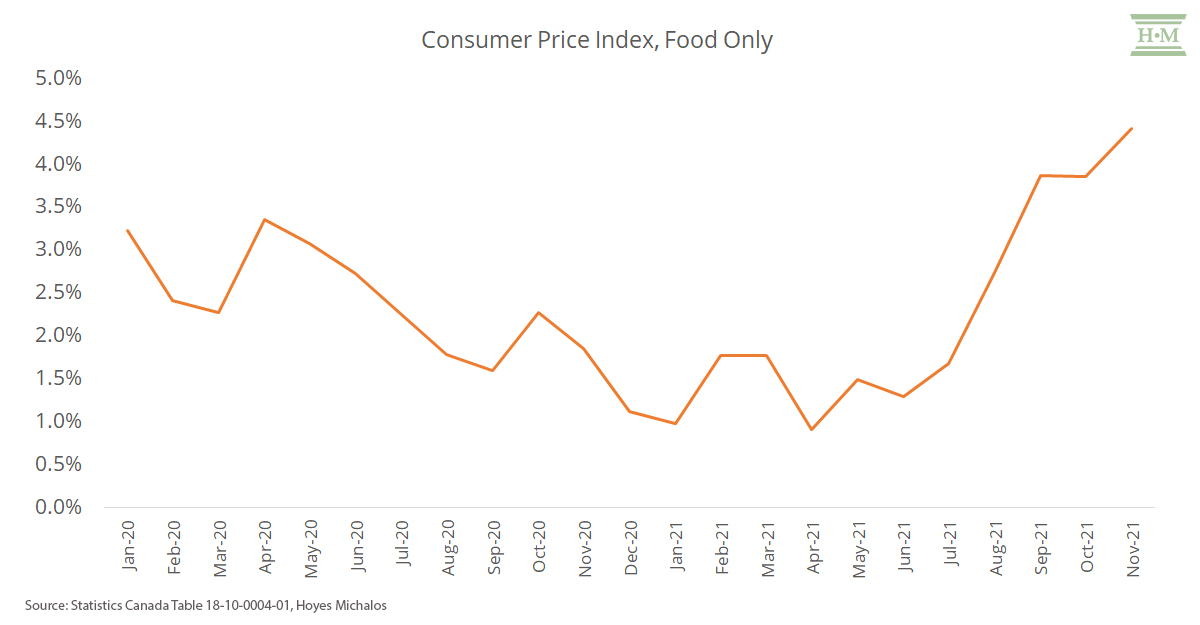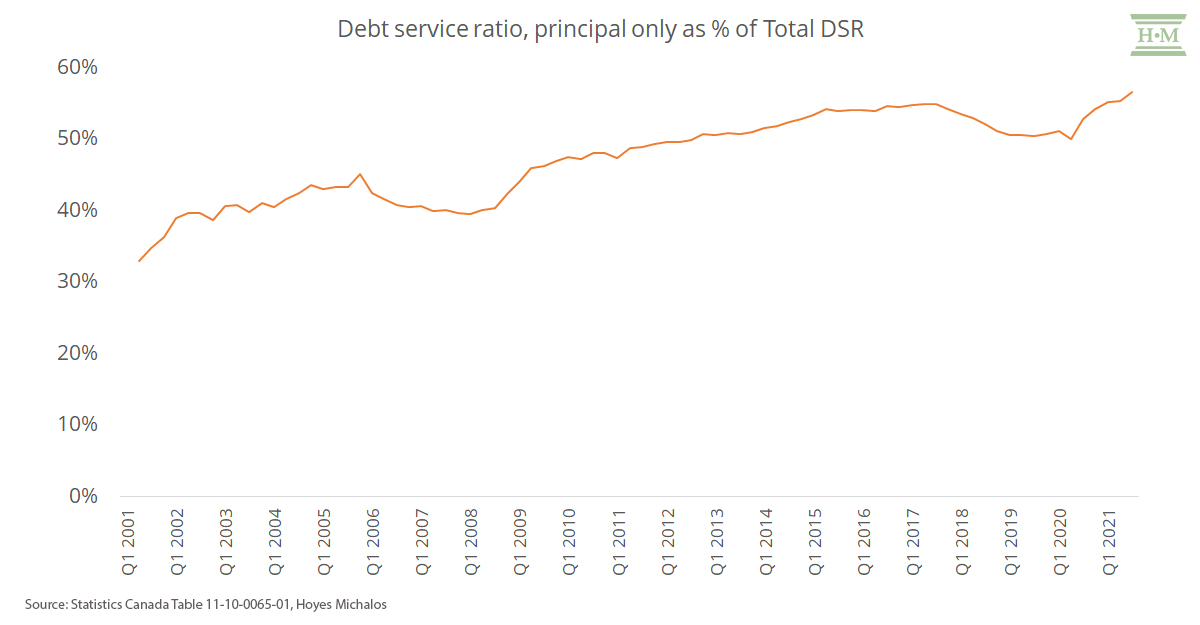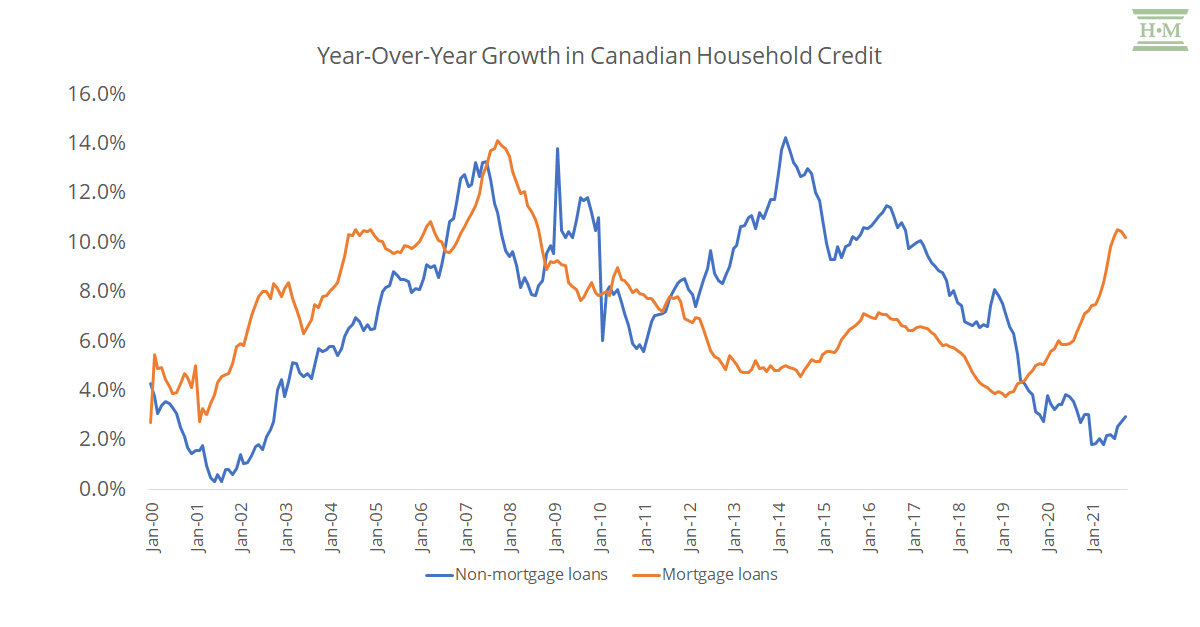
The past 18 months have proven to be a mixed bag in terms of how Canadians have managed debt during the pandemic. Yet, the harsh reality is that total household debt is now higher than ever before, up 10.3% from pre-pandemic levels (October 2021 versus February 2020).
That’s even more staggering when you consider that Canadians paid down non-mortgage debts at the fastest pace in 30 years during the initial months of the pandemic. While non-mortgage debt fell through the early months of the pandemic, balances have been creeping up again since March 2021 and are now 0.8% above pandemic lows.
In our annual year-end review, I’d like to explore why insolvencies have not been on the rise and look at how recent trends in consumer credit are likely to impact household credit and insolvency risk in the coming months.
Table of Contents
What happened with insolvencies in 2021?
2021 was a relatively uneventful year for Canadian consumer insolvencies. Year-to-date to October (the most recent month reported by the Office of the Superintendent of Bankruptcy), insolvencies declined 11.9% in Ontario and 7.4% across Canada. Much of this decline was in the first quarter over pre-pandemic volumes. Since March 2020 overall consumer insolvencies have largely stagnated. Across Canada, 2021 insolvencies were up only 2.9% from pandemic lows from March through October, while Ontario volumes continued to fall, down 4.3%.
I’m often asked why insolvencies are not skyrocketing amid a pandemic?
During the pandemic three important changes to personal finances impacted many highly indebted households:
- an increase in disposable cash flow for those who remained working as their expenses dropped,
- a shift in income to non-garnishable government supports for those who lost their job,
- a severe lack of collections and lawsuit activity for those behind on their debt payments.
In the beginning stages of the pandemic, working households found themselves spending much less. This increase in cashflow was redirected towards debt repayment with the result that credit card debt fell to a 10-year low in February 2021 and remains below pre-pandemic levels still. This effectively broke the typical debt spiral towards insolvency for some Canadians.
However, it is the second two factors that had the most impact on insolvency filings. The main tipping points for indebted individuals to contact a Licensed Insolvency Trustee are repeated collection calls, a wage garnishment or a court judgment.
Debt collectors remained quiet most of the year while courts were either closed or slowly working on a backlog of files. Up until now, there has been little incentive for heavily indebted individuals to ‘act’ on their debt obligations. Individuals who were not working and on CERB or its successor program, CRB, were creditor proof with income that cannot be garnisheed.
Even Canada Revenue Agency has delayed collection action during much of the past 18 months. With most CRA agents working at home, collection calls and notices were slow to non-existent. The Canadian government also allowed taxpayers with income below $75,000 who earned COVID-19 benefits to defer payments interest-free until April 30, 2022, reducing the incentive to deal with outstanding tax debts, at least for now.
So that explains why consumer insolvencies have remained so low. And while we expect consumer filings to continue to lag for the next few months, there are some indicators that there will be a resurgence in insolvencies.
Total household credit says, ‘what pandemic?’
Despite a nationwide economic lockdown, Canadian households didn’t curb their appetite for debt. We are now sitting at more than $2.6 trillion in total outstanding credit. Total average outstanding household credit increased 6.0% year-to-date and is trending upwards, with growth at 7.2% in October 2021.
Most of the growth was led by residential mortgages, which now make up a staggering 73% of total household credit (as of October 2021), compared to 69% in 2019. Year-to-date, residential mortgages are up 9.2%, increasing every month over the past year and up 10.2% in October 2021 over growing volumes.
Low-interest rates, FOMO and investor frenzy created an insatiable demand for housing, leading to escalating house prices. According to the Canadian Real Estate Association, home values in Ontario are up nearly 23% year-over-year in October 2021 and 18.2% in Canada.
Homeowner insolvencies are almost non-existent
Unsurprisingly, indebted homeowners have been able tap into this rising household equity and avoid insolvency by consolidating their unsecured debts into their home mortgage.
The result was that our Homeowners Bankruptcy Index was at record lows all year and currently sits at 1.5% in November 2021. It hit its lowest point ever recorded in September 2021 at just 0.4%.
Consumer appetite for non-mortgage credit returning
Mortgage debt was, without question, the biggest contributor to mounting debt loads in 2021. Throughout most of this pandemic, Canadians repaid a record $20 billion in non-mortgage debt, but this downward trend has slowed.
This return to old habits of funding spending with credit is cause for concern.
Credit card debt rebounding
There was a lot of media surrounding our impressive ability to pay off credit card debt during the pandemic – a whopping $16.6 billion decline until its low in January 2021. While still not at pre-pandemic levels, credit card balances have increased throughout 2021.
Looming on the horizon: income tax debt
While we are concerned about debt balances slowly creeping back up after months of decline, we are more worried that many Canadians will need to brace for an impending tax liability due to CERB and CRB receipts in 2020 and 2021. This is an outstanding obligation which has been kicked down the road by both Canadians and the federal government but will inevitably add to consumer debt loads in 2022.
According to Statistics Canada, 35.2% of Canadian workers who earned at least $5,000 in 2019 received CERB payments in 2020. In addition, there have been almost 2.3 million unique applicants for CRB. Many Canadians who received one or both benefits will be facing a potential tax obligation. CERB was paid without withholding taxes and CRB was paid with a nominal 10% tax withheld. While an interest-free period is available to recipients earning less than $75,000, this interest relief comes to an end on April 30, 2022.
Based on calls to our office, many Canadians took advantage of this interest relief and put off paying their 2020 tax debts. Next year, these individuals will have both their 2020 tax obligations, as well as any taxes owing for 2021. I expect there may be a lot more borrowing to make these tax payments next year.
Collection limitation period is fast approaching
While collection calls were slow at the beginning of 2021, this too is changing. Loans that went into arrears just before the pandemic are nearing the end of the statute of limitation period during which creditors can commence legal action. While there is some legal question as to whether that period is extended by six months in Ontario because of provincial emergency orders during the pandemic, creditors are not taking any chances. We have seen an increase in calls from individuals receiving notification of possible court action from major banks in recent months.
Debt to disposable income rising again, albeit slowly
Canadians owe an average of $1.77 for every dollar of disposable income, still below pre-pandemic levels but rising again.
The issue as we see it is that there are competing, and growing, demands on the average household’s disposable income and this may not bode well for many households moving forward.
It’s costing way more to live, and this will go on credit for some
As of November 2021, inflation is up 4.7%, the largest gain since February 2003.
With pandemic-related supply chain issues and overall increased costs of production, Canadians can expect to pay a lot more for their day-to-day needs for months to come.
Prior to the pandemic, our annual insolvency study found that most debtors did not have an income problem, they had an expense problem. The basic costs of living consumed such a high proportion of their paycheque that any small extra expense was put on credit. In 2020, the average insolvent debtor spent 42% of their income on housing and 30% on food and other living costs. With both these costs rising, these percentages are likely to increase, leaving very little remaining to cover debt repayment.
And any rise in the costs of basic needs like food and shelter will likely mean more credit card debt. Food costs alone are up 4.4% in November 2021, after rising steadily at less than 2% all year. This sudden and likely continued rise in the cost of living will be a burden for already indebted households.
At least our interest costs are low, for now
A final cause for concern is increased interest rates and its impact on the cost of debt repayment.
Low rates and declining balances early in the pandemic have lowered debt servicing costs for the average Canadian to levels not seen since 2005. The good news is more of these payments are going towards principal repayment. As of the third quarter of 2021, more than 56% of debt payments were going to pay down debt.
What’s unknown is how long the boon of low rates will last. The Bank of Canada has expressed a desire to raise interest rates as early as next year. While I know rates are not likely to jump astronomically, even a small increase will be felt immediately on the servicing costs of callable debts like lines of credit and variable rate mortgages.
While there will be a lag effect on fixed-rate mortgage debt, Canadians are rolling the dice on low rates to continue. According to the Canadian Mortgage and Housing Corporation, 40% of new mortgage balances issued in the second quarter of 2021 were variable rate mortgages. Given the sheer size of today’s mortgages, any interest rate increase will mean a much bigger struggle to meet monthly mortgage payments. The average new mortgage in Canada was $371,584 in the third quarter of 2021, up 22.5%. In Ontario, it was $464,712, up 24.5% over the prior year. A half-percentage increase on an average Ontario mortgage from say 1.45% to 1.95% could cost the mortgage holder an extra $110 a month or an increase of almost 5% in their monthly mortgage payment. For someone living paycheque to paycheque, this extra payment typically goes on consumer debt as homeowners will do anything to avoid defaulting on a mortgage payment.
And if home values also drop, it will be that much more difficult to refinance or deal with any accumulated unsecured debt.
Conclusion
In short, I am concerned about the loss of financial cushions from structural changes during COVID that have actually protected indebted households for the last two years.
CRB has already wound down. Unless the Canadian government implements yet another income supplement, more and more people will return to regular work, where their income could be at risk of a wage garnishment if they fall behind on their debts. The CRA is likely to resume more aggressive collection activity next year, while at the same time eliminating interest relief on tax debt. The cost of living is not going down anytime soon either. All I’m saying is that pressures are starting to mount. An absence of cushions doesn’t mean an immediate return to record insolvencies, but it will be the beginning of some serious financial stress for Canadian households.
However, if you want to find out how much I, and my co-founder Ted Michalos, believe insolvencies will rise, and when, tune in for our year-end review on the Debt Free in 30 Podcast on January 1, 2022.
Every year we choose 10 key statistics that most accurately tell the story of what’s happening with consumer debt in Canada and Ontario.
Here are our top 10 debt statistics for 2021
- Consumer insolvency decline: 11.9% in Ontario, 7.4% in Canada (to October 2021)
- Total household debt: $2.6 trillion
- Growth household credit: 0% and trending upwards, with growth at 7.2% in October 2021
- Mortgage debt as % of total household credit: 72% (73% in October 2021)
- Homeowner insolvencies at record lows: 1.5% in November 2021
- Percentage of Canadian workers received at least $5000 CERB: 35.2% – tax debt risk
- Debt to income ratio: 177.15 – slowly rising again
- Inflation up 4.7% in October 2021 – puts pressure on household budgets
- Growth in average new mortgage: Canada 22.5%, Ontario 24.5%
- Interest portion of debt service ratio: 43.5% – very low but at risk to rise
Sources
- https://www150.statcan.gc.ca/t1/tbl1/en/tv.action?pid=3610063901
- https://www150.statcan.gc.ca/n1/pub/11-621-m/11-621-m2021004-eng.htm
- http://strategis.ic.gc.ca/eic/site/bsf-osb.nsf/eng/h_br01011.html
- https://www150.statcan.gc.ca/n1/pub/45-28-0001/2021001/article/00021-eng.htm
- https://www150.statcan.gc.ca/n1/daily-quotidien/210823/dq210823c-eng.htm
- https://www150.statcan.gc.ca/n1/daily-quotidien/210602/dq210602b-eng.htm
- https://www.canada.ca/en/revenue-agency/services/benefits/recovery-benefit/crb-statistics.html
- https://www150.statcan.gc.ca/n1/daily-quotidien/211117/dq211117a-eng.htm
- https://www150.statcan.gc.ca/t1/tbl1/en/tv.action?pid=3810023801
- https://www.cmhc-schl.gc.ca/en/blog/2021/new-report-residential-mortgages-shows-30-year-low-arrears
- https://www.cmhc-schl.gc.ca/en/professionals/housing-markets-data-and-research/housing-data/data-tables/mortgage-and-debt/average-value-new-mortgage-loans-canada-provinces-cmas
Similar Posts:
- 2023 Debt Statistics and What It Means for Consumer Insolvencies
- 10 Key Canadian Debt Statistics That Explain Consumer Insolvency Growth in 2019
- Top 10 Debt Statistics For 2022 and What’s Ahead for Consumer Insolvencies
- Homeowners Not Filing Insolvency Despite Rate Hikes – Why Not?
- Middle Income Earners Facing Higher Debt Post-COVID



